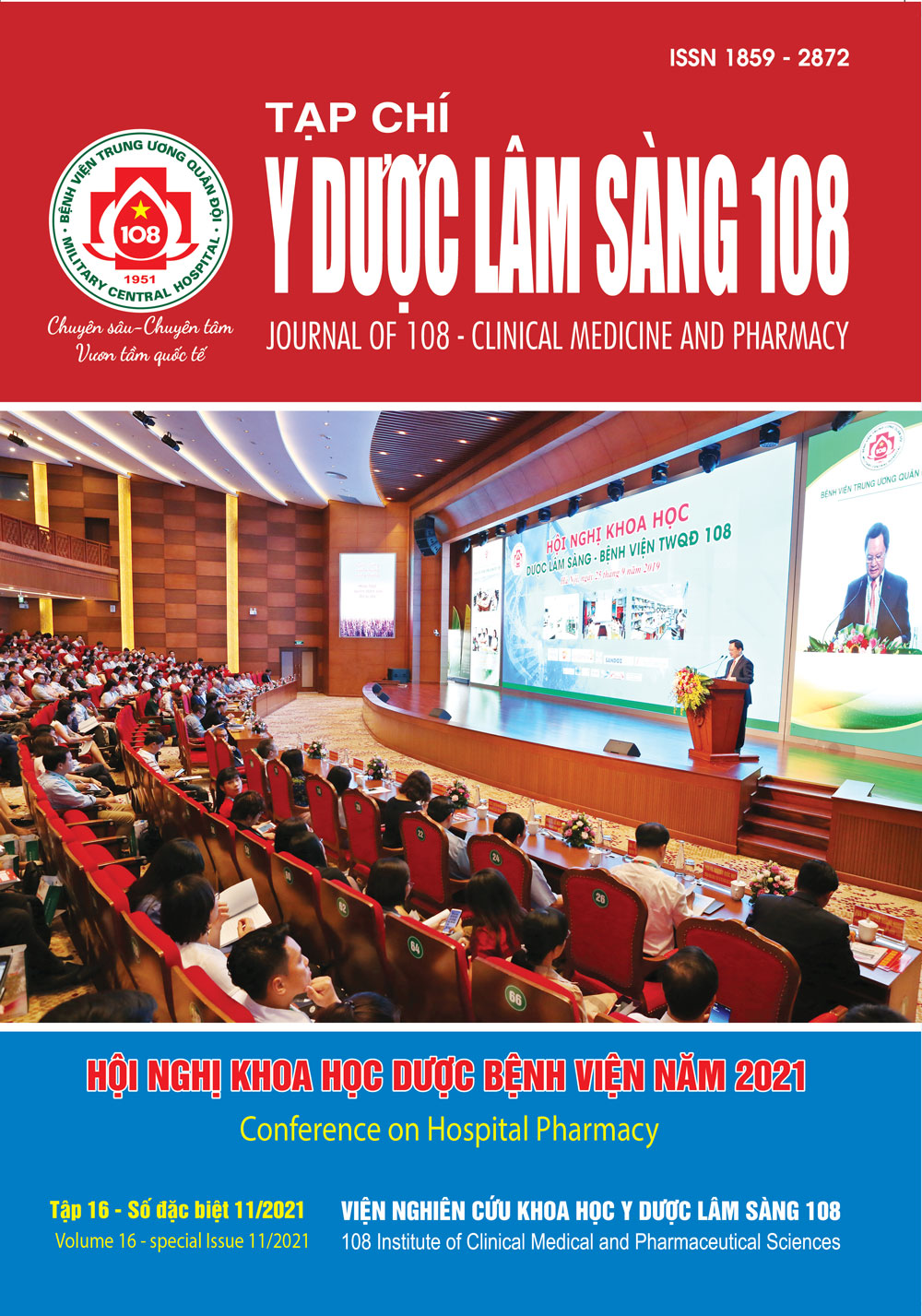Microbiology characteristics and antimicrobials use in treating infection caused by Gram-negative bacteria with reduced susceptibility to carbapenems in Huu Nghi Hospital
Main Article Content
Keywords
Abstract
Objective: To describe microbiology characteristics and antimicrobials use in treating infection caused by Gram-negative bacteria with reduced susceptibility to carbapenems in Huu Nghi Hospital. Subject and method: We conducted a retrospective descriptive study on 97 patients infected with at least one out of four studied pathogens in Huu Nghi Hospital from January 1, 2018 to December 31, 2019. Result: Mean age of the study population was 82.4 years, all patients had comorbidities and most had surgical/procedural interventions. 21.6% of patients were treated in the intensive care unit. We documented 116 isolates of Gram-negative bacteria with reduced susceptibility to carbapenem, the most common of which was A. baumannii (37.9%). The proportion of strains with meropenem resistance was lower than that of imipenem (0 – 22.5% and 21.7 – 59.1% respectively). The prevalence of PDR strains was high (44.4 – 56.5%). The rate of MIC determination for both carbapenem and colistin were low (less than 18.0%). Prior to microbiological results, the majority of patients received an empirical regimen containing one β-lactam/β-lactamase inhibitor (BL/BLI) or one 3rd/4th generation cephalosporins (C3G/C4G). Once the pathogen was identified, the proportion of patients was prescribed colistin and carbapenem increased, but most patients received lower dosage than recommended. The rate of complete response after antibiotics discontinuation was 73.2% and the rate of infection-related death was 27.8%. Conclusion: The study had described microbiology characteristics and antimicrobials use in treating infection caused by Gram-negative bacteria with reduced susceptibility to carbapenems at Huu Nghi Hospital. The research results will be an important basis for the hospital to implement several specific strategies to improve the effectiveness of antimicrobials in treating these infections.
Article Details
References
2. Chen Haojun, Liu Qianqian et al (2017) Efficacy of sulbactam for the treatment of Acinetobacter baumannii complex infection: A systematic review and meta-analysis. Journal of infection and chemotherapy: Official journal of the Japan Society of Chemotherapy 23(5): 278-285.
3. Chinese X. D. R. Consensus Working Group, Guan X et al (2016) Laboratory diagnosis, clinical management and infection control of the infections caused by extensively drug-resistant Gram-negative bacilli: A Chinese consensus statement. Clin Microbiol Infect 22(1): 15-25.
4. Falagas ME, Vardakas KZ et al (2015) Tetracyclines for multidrug-resistant Acinetobacter baumannii infections. Int J Antimicrob Agents 45(5): 455-60.
5. Hsu Li-Yang, Apisarnthanarak Anucha et al (2017) Carbapenem-resistant acinetobacter baumannii and enterobacteriaceae in South and Southeast Asia. Clinical microbiology reviews 30(1): 1-22.
6. Neuner EA, Gallagher JC (2017) Pharmacodynamic and pharmacokinetic considerations in the treatment of critically Ill patients infected with carbapenem-resistant Enterobacteriaceae. Virulence 8(4): 440-452.
7. Piperaki ET, Tzouvelekis LS et al (2019) Carbapenem-resistant Acinetobacter baumannii: In pursuit of an effective treatment. Clin Microbiol Infect 25(8): 951-957.
8. Tsuji BT, Pogue JM et al (2019) International consensus guidelines for the optimal use of the polymyxins. Pharmacotherapy 39(1): 10-39.
 ISSN: 1859 - 2872
ISSN: 1859 - 2872
